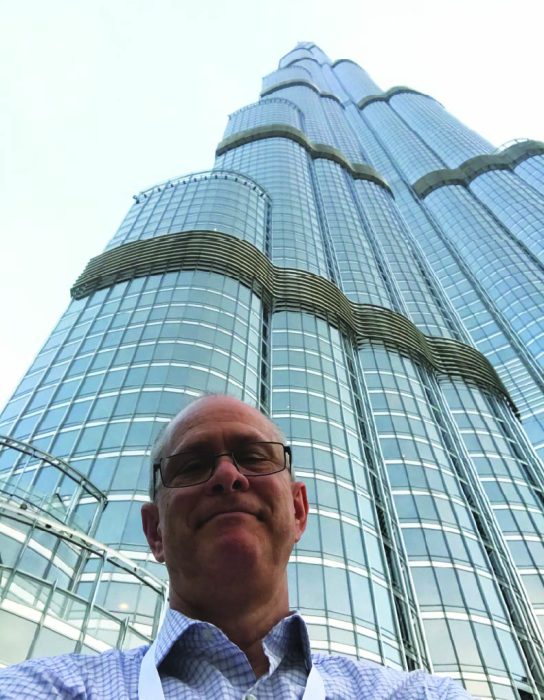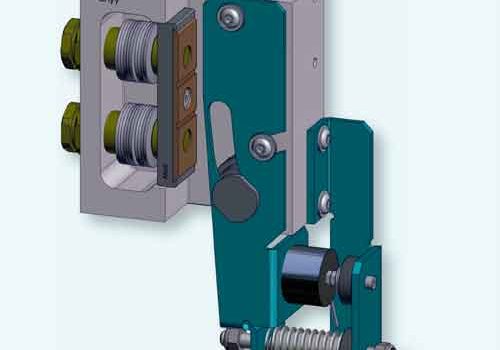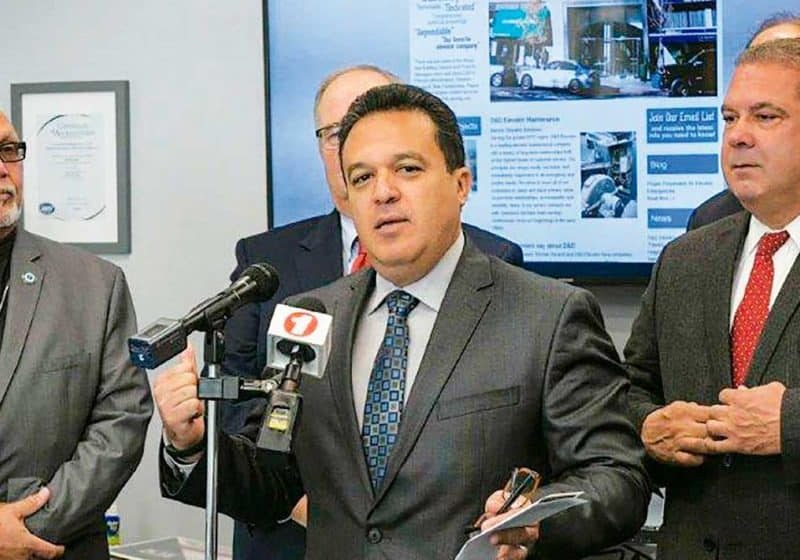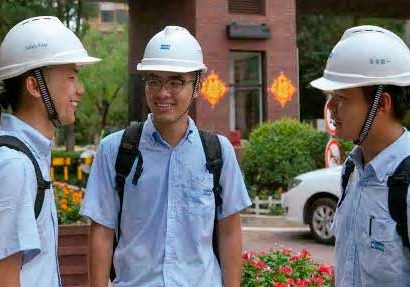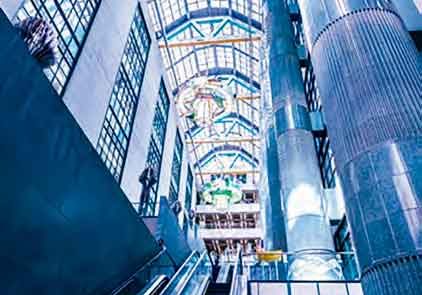2018 CTBUH International Conference
Feb 1, 2019

Dubai and Abu Dhabi host well-attended event on “Polycentric Cities: The Future of Vertical Urbanism” with strong VT industry support.
The 2018 International Conference of the Council on Tall Buildings and Urban Habitat (CTBUH) took place on October 20-25, 2018, in Dubai and Abu Dhabi. The conference was organized into four distinct events. The first three occurred in Dubai: workshops and CTBUH committee and working- group meetings (day one), the core conference (days two and three), and offsite programs (day four). The final event examined the topic of regional city programing in Abu Dhabi for the conference’s final two days.
The overall conference theme was “Polycentric Cities: The Future of Vertical Urbanism,” which was defined as follows:
“The era of the traditional metropolis, fanning out in waves of decreasing density from a single-core central business district, may be coming to an end. As we approach the new normality of cities housing 10 million or more inhabitants, those best positioned for the future are evolving along polycentric, multi-nodal lines, with several central business districts, ideally all offering something slightly different to the urban inhabitant. When focused around transit nodes and well-planned infrastructure, embracing high density, public space and civic functions, this amalgamation of ‘several cities within a city’ perhaps offers the best opportunity for a sustainable future for the many millions of people who will move into cities over the coming decades.”[1]
This theme was explored in workshops, keynote lectures, panel discussions and presentations. The 12 half-day workshops on the morning of day one included “Fire, Safety + Security” led by Alfredo Ramirez of Underwriters Laboratories (Chicago). The workshop was attended by numerous vertical-transportation (VT) industry members and featured a presentation by Simon Lay, CTBUH fellow and director of OFR Consultants (Manchester, U.K.). Lay’s presentation, titled “Voluntary Egress Elevators – Enhancements to the 2004 CTBUH Guidelines,” addressed the impact of the 2004 CTBUH publication Emergency Evacuation Elevator System Guidelines and the limited success of the adoption of Occupant Evacuation Operation systems. During the question-and-answer session following Lay’s presentation, it was reported that Johannes de Jong (formerly with KONE and cofounder [in 2015] of Elevating Studio in Singapore) was exploring the possible creation of a CTBUH working group to consider drafting new elevator evacuation guidelines.
That afternoon opened with a general meeting of CTBUH leaders led by Chairman Steve Watts and Executive Director Antony Wood, which was followed by committee and working-group sessions. The latter included a meeting of the Vertical Transportation Working Group chaired by Robin Cheeseright (D2E International VT Consultants). Working- group members in attendance were Robert Boog (Schindler), Rony Eappen (D2E), Harri Länsiö (KONE), Joerg Mueller and Karl-Otto Schöllkopf (thyssenkrupp), Steve Newton (Schindler), Richard Pulling (Otis), and Steven Truss (WSP). The group was established in 2016 to pursue the development of a Vertical Transportation Technical Guide intended to “provide tall-building industry professionals with a resource for the most recent innovations in the VT sector.”[2] A draft of the guide was completed in March 2018, and the group discussed plans to complete the project in time for publication and presentation at the CTBUH 10th World Congress, taking place on October 28-November 2 in Chicago.
The two-day core conference featured plenary lectures and panel discussions, as well as a series of parallel “tracks,” each of which had a corporate sponsor, with the VT industry sponsoring four of eight tracks:
- Building Façades
- Smart Tall Buildings (Schindler)
- Skybridges (thyssenkrupp)
- Polycentric Urbanism
- Tall Timber
- Urban and Building Transit (KONE)
- Advanced Construction and Engineering
- The Occupant Experience (Otis)
Each track included five sessions over the course of two days for a total of 40 separate sessions. Members of the VT industry participated in 15 sessions as chairs, presenters and panel discussants. The topics derived from the theme of each track and addressed a fairly normative range of industry products and subjects.
The Skybridges track included a presentation by Dario Trabucco titled “A Study on the Design Possibilities Enabled by Ropeless Vertical and Non-Vertical Elevators,” which addressed the architectural application of thyssenkrupp’s MULTI system. Trabucco (CTBUH Research Manager and researcher at the Università Iuav di Venezia) has conducted this research for more than two years. The effort, begun in September 2016, is a CTBUH research project funded by thyssenkrupp with a grant of US$264,000. The investigation is described as a study of:
“. . .how technological innovation in elevators, specifically ropeless, non-vertical cabins, could impact the design outcomes of tall buildings and cities. The study seeks to remove the evolutionary bottleneck created by exclusively vertical elevator systems, as conventional systems to date have limited the height and influenced the shape of skyscrapers, which have historically been designed as a vertical repetition of floors.”[3]
Trabucco’s presentation included a variety of visual representations of the dramatic shift in thinking implied by MULTI where vertical clusters of elevators are replaced by vertical and horizontal transportation planes that constitute a possible new paradigm for tall-building VT design. CTBUH announced that the conclusion of this work will be presented and released at the CTBUH Tall+Urban Innovation Conference, taking place on April 8-10 in Shenzen, China. The results will be published in the form of a CTBUH research report, with the working title of Rope-Less and Non-Vertical Elevator Systems. The report will provide an overview of VT history, summarize conventional systems and describe why MULTI holds much potential for tall buildings. It will then cover the results of CTBUH’s “Master’s Thesis” challenge, in which graduate design students explore non-vertical elevator technologies in their thesis projects. Finally, the report will diagram non-vertical systems’ “design considerations and flow opportunities.”[4]
This investigation was also represented in the recognition of the winner of the “MULTI Master’s Thesis Challenge.” The design competition, “Designing for Innovation: The Rope-Less Non-Vertical Elevator,” also sponsored by thyssenkrupp, sought to:
“. . .provide master’s-level Architecture students the opportunity to study and develop design possibilities unlocked by the application of this new elevator system, allowing students to design more complex, connected and dynamic configurations for tall buildings as dictated by the demands of modern society.”[5]
Twenty submissions were received from students enrolled at the Università Iuav di Venezia (Italy), University of Melbourne (Australia) and the University of Nottingham (U.K.). The winner was Winki Ip, University of Melbourne, and the award was conferred at the conference by Andreas Schierenbeck (former thyssenkrupp Elevator CEO).
CTBUH has consistently provided a detailed analysis of attendees, and the delegate list for this conference exemplified this trend. The delegates’ disciplinary categories, as defined by CTBUH, included owners/developers/occupiers/property managers, architecture/urban planning/interiors companies, contractors/project managers/cost consultants, engineering companies, government/institute/research companies and material/system suppliers. The VT industry was placed in the latter category, with KONE, Schindler, Otis and thyssenkrupp holding places one through four of the “top ten Material/System Suppliers.” Other industry members in attendance included Elevating Studio, Fortune Consultants, Hilson Moran, Innovative Lift Consulting, Liftinstituut, MovveO, RBA Vertical Transportation Consultants and WSP. Overall, the delegates represented 447 companies.
The conference also featured a variety of exhibitions ranging from dedicated rooms to booths to exhibits in the session rooms. VT industry exhibits were in the latter category; however, their location, in each case inside and near the entrance to their respective sponsored session room, provided limited display space and essentially limited access to times between sessions.
As always, the conference provided ample opportunities for networking. Events included an evening reception held on an outdoor terrace at the base of the Burj Khalifa and a second evening reception held on an outdoor terrace at Atlantis, a five-star hotel on the crescent-shaped outer island of The Palm Jumeirah. Additionally, day two of the conference ended with a variety of sponsor- hosted social events and receptions. The thyssenkrupp exhibit feature industry highlights with the publication of the aforementioned Rope-Less and Non-Vertical Elevator Systems
The conference concluded in Dubai with a day of offsite programs that consisted of half-day tours of existing buildings and works under construction. The final two days of the conference took place in Abu Dhabi, where participants explored the topic of regional city programing. This was structured as a separate event and was attended by a much smaller group than was present in Dubai.
The VT industry was well represented at the conference through the sponsorship of session rooms, exhibitions, presentations and attendance. The delegate list, which listed those who had registered by October 8, included more than 150 VT industry members out of 1,240 total registrants (approximately 12%). This year’s conference in Chicago will and Vertical Transportation Technical Guide.



References
[1] CTBUH. Polycentric Cities: The Future of Vertical Urbanism, Conference Proceedings (2018).
[2] CTBUH. “Vertical Transportation Working Group Meets at CTBUH 2018 Middle East Conference” (www.ctbuh.org).
[3] CTBUH. “A Study on the Design Possibilities Enabled by Ropeless Vertical and Non-Vertical Elevators” (www.ctbuh.org).
[4] CTBUH. “The Results of the Research Presented at the 2018 CTBUH Conference” (www.ctbuh.org).
[5] CTBUH. “Master’s Thesis Challenge: Designing for Innovation: The Rope-Less Non-Vertical Elevator!” (www.ctbuh.org).
Get more of Elevator World. Sign up for our free e-newsletter.



